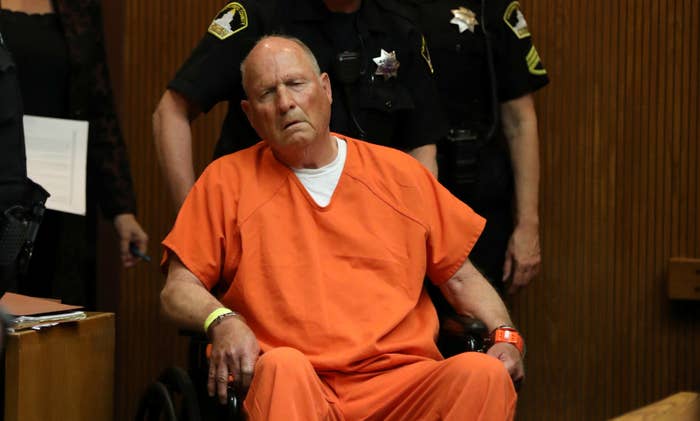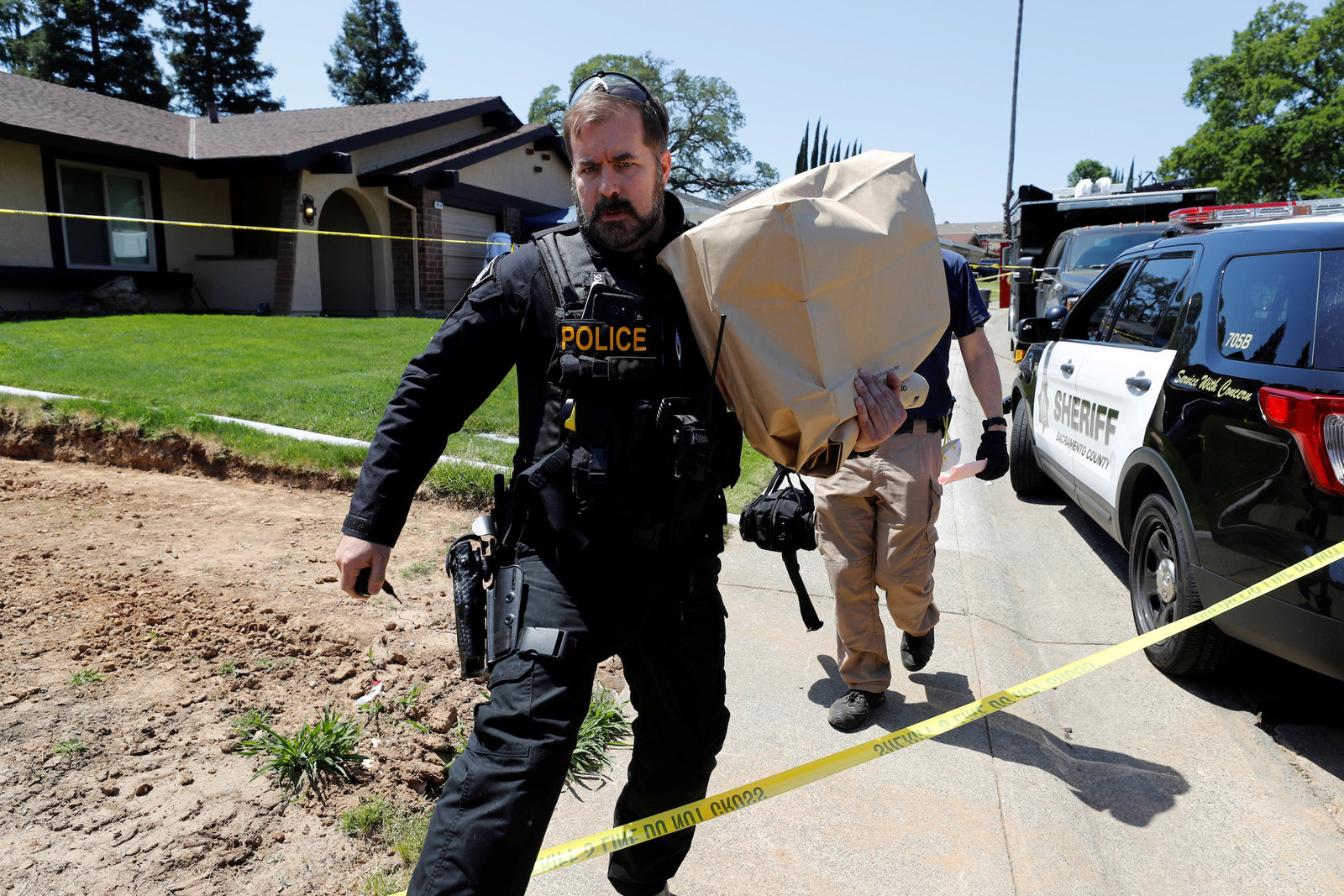
The man who terrorized California for more than a decade as the Golden State Killer appears to have been motivated by anger — and investigators believe there may still be additional victims who have not yet been linked to him.
Police arrested 72-year-old Joseph DeAngelo last week after a decades-long investigation into more than 51 rapes, 12 killings, and over 120 burglaries in the 1970s and 1980s. But authorities told BuzzFeed News this week that numerous questions about DeAngelo remain, including if he ever actually ended his attacks.
"We don’t know if he stopped," said Susan Kang Schroeder, chief of staff at the Orange County District Attorney's Office, one of the many agencies that investigated the crime spree. "At this point we don’t know if the killings stopped in 1986."
Larry Pool, currently a senior investigator with the Riverside County District Attorney's Office, said that most sex offenders begin committing crimes at a younger age than DeAngelo allegedly did, meaning there could be victims who pre-date the known attacks. And he said that the last incident in 1986 is merely the final one that investigators currently know about.
"Might there be other incidents or an incident elsewhere that we don’t know of? Yes, there might be," Pool, who spent more than two decades on the case, told BuzzFeed News Tuesday. "It’s a possibility."
Paul Holes, a retired investigator for the Contra Costa County District Attorney's Office who spent 24 years chasing the Golden State Killer, agreed that DeAngelo may still have more victims who have not yet been identified.
"I'd say with 80% confidence that there are more sexual assault cases," Holes told BuzzFeed News.
Though Holes added that he would be surprised if there are more than one or two other homicides attributed to DeAngelo, the possibility that there are crimes that have not yet been tied to him highlights the many unanswered questions surrounding the attacks.
DeAngelo was not cooperative following his arrest last week, Holes said, and spent hours "just catatonic" as detectives attempted to interview him.
"This guy was not answering any question," said Holes, who observed seven hours of DeAngelo's police interrogation. "He was just completely blank. It was detectives basically monologuing."
If DeAngelo did ultimately stop his alleged series of crimes, it may have been in part because he became frightened. Holes said that in 1981, when DeAngelo allegedly killed Cheri Domingo and Gregory Sanchez, he clashed with Sanchez, a "significantly larger male."
"I believe that the perpetrator walked away scared from that crime scene after a physical fight with this guy," Holes said.
Only one crime after the 1981 incident, the murder of an 18-year-old woman in 1986, has been attributed to DeAngelo — so far.

However, investigators are actively exploring the possibility of additional crimes. In Simi Valley, a suburb north of Los Angeles, police believe DeAngelo might be responsible for two additional murders, KCAL reported. The 1978 killings of a woman and her son there were originally attributed to the woman's ex-boyfriend, but DNA exonerated him in 2016 after he spent nearly 40 years in prison.
"We’ve made a request for a DNA comparison to find out if the DNA they recovered from Mr. DeAngelo is consistent with the DNA that we have in our case,” Simi Valley Deputy Chief Joseph May told KCAL.
Simi Valley Police did not respond to BuzzFeed News' requests for comment.
Farther up the California coast, the Santa Barbara County Sheriff's Office is seeking leads from the public in connection with three homicides that have been attributed to DeAngelo, and is also inviting anyone who believes "they were a victim of some crime by him, knew him, or were aware in any capacity of his being" in the county to come forward.
While DeAngelo's lack of cooperation has left his motivation for the crimes largely a mystery, Holes said that at one point the Golden State Killer appeared to be driven by anger. During the June 1978 murder of a woman in Davis, California, Holes said, DeAngelo was "literally saying 'I hate you, Bonnie, I hate you, Bonnie' over and over again."
Holes told BuzzFeed News that he always thought that detail was significant, and investigators later identified a wedding announcement in a California newspaper between DeAngelo and a woman named Bonnie. But Holes was never able to find a record that the marriage actually occurred. He suggested DeAngelo committed crimes while "having some sort of emotional negative response to remembering Bonnie," who he appeared to have broken up with.
"He’s what we classify as an anger-retaliatory offender," Holes said. "He gets mad and by proxy takes out his anger on the victims. This is just absolutely a prototypical example of a retaliatory offender."
Whether that same anger continued to play a role in the dozens of subsequent attacks remains unknown, though it could have been a factor, Holes added.
But DeAngelo also made an extra effort to terrorize his victims, Holes said. In one case, DeAngelo allegedly tied a man to a bed, stacked dishes on top of him, and said he would shoot the man's wife if any of the dishes fell. DeAngelo allegedly raped the woman, but ultimately did not kill the couple.
"He was all about trying to be scary," Holes said. "Trying to instill fear in them. That was done through the constant issuance of threats. He'd say, 'I have a .44 Magnum and I’ll blow your brains all over the wall.'"
Holes also described a case in which DeAngelo allegedly tied up a mother and daughter on a bed. With the mother blindfolded, DeAngelo allegedly sat silently nearby until she thought he had left. When the mother finally spoke to her daughter, DeAngelo allegedly pressed down slowly on the bed to let them know he was still there.
And on Monday, the FBI released an unsettling recorded phone call they believe the Golden State Killer placed to a victim. In the call, a person can be heard breathing deeply before saying, "I'm gonna kill you," over and over.
Schroeder said that whatever DeAngelo's motivations, investigators believe he knew what he was doing.
"We don’t think he’s crazy," she said. "We absolutely believe he was of sound mind and that he was just extremely calculating and meticulous."
Pool said that DeAngelo would spend anywhere from hours to weeks casing his targets, who most often lived in single-story homes. Typically, Pool said, DeAngelo would eventually find a couple, then on the night of the attack wait for them to go to bed and then sneak into the house with enough pre-cut ligatures to tie up everyone inside. He usually wore a ski mask and gloves.
"Once inside the residence he will disable telephone lines," Pool said. "If an air conditioner is on he turns it off. If a heater is on he turns it off, so he has better hearing, so he can hear what’s going on inside the residence."
The killer would eventually restrain the men and escort the women to the living room and assault them, according to Pool. Sometimes he would claim that he had been watching the women at other locations in an effort "to terrorize and disturb" them, Pool said.
During some attacks, DeAngelo allegedly paused to visit the kitchen, making "exaggerated noises" while eating the victims' food and drinking beverages from their fridges, Pool said.
And DeAngelo was evidently not deterred by police efforts to find him.
"Despite the fact that law enforcement is on high alert and looking for him it doesn’t appear to dissuade him at all," Pool said. "He likes the excitement, he likes the added dimension of police being out there."

Holes also nearly had his own run-in with DeAngelo. In March, about a month before DeAngelo's arrest, Holes went to his house and parked outside. DeAngelo was on Holes' list of possible suspects at that point, though he wasn't the only person.
"I was there for about five minutes," the former investigator said. "I was assessing his house, I was assessing his neighborhood. I was so jaded after so many suspects and I just thought I should go up to his door and knock and be done with it."
Holes said he ultimately decided to drive off without confronting DeAngelo or asking for his DNA — a decision he says was the right one after finding out that DeAngelo was both relatively spry and a gun owner.
"Things could’ve gone badly," Holes added.
Multiple law enforcement agencies, as well as the FBI, continue to investigate the case and declined to comment on the details of the specific crimes.
But Holes said that even with many unanswered questions, DeAngelo's age and the wealth of evidence — which includes DNA evidence matched by a genealogy database — means he will likely be "in custody for the rest of his life."
"I don’t see any way that this guy will ever be able to get out of custody," Holes said. "The case against him is so strong."

